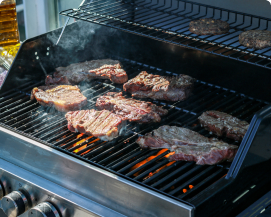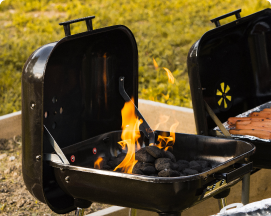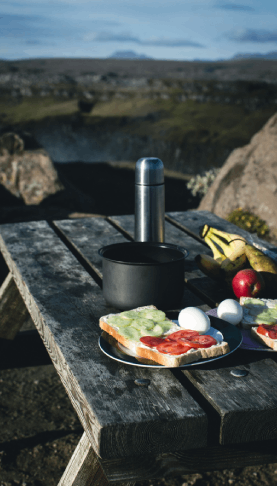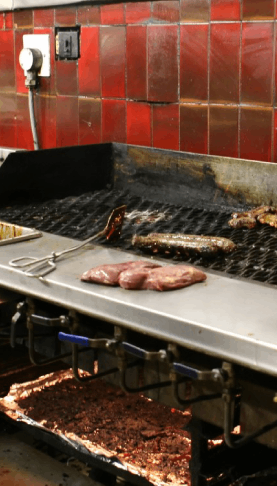What Pipedrive Integration Offers Restaurant Owners and Chefs
If you run a restaurant or manage a kitchen, you probably do not imagine yourself spending hours organizing contacts, confirming reservations, or chasing suppliers through email. But, these things eat up your time, every week. Integrating your tools can change that. What Pipedrive Integration really means for restaurant owners and chefs is less stress, fewer mistakes, and more space for real hospitality. When your platforms talk to each other, even basic daily tasks feel easier. You save time. Staff communicate better. Orders do not slip through the cracks.
To see how to start connecting your systems, check out this useful guide on Pipedrive Workflow Automation. It demystifies some of the initial steps, which can be overwhelming, especially if you have never automated before.
Does Pipedrive work for the food world? Yes, and in some ways it might be more helpful than in other industries. Restaurants rely on many moving parts: reservations, regulars, events, suppliers, staff training, and sometimes delivery partnerships. Syncing them with your CRM lets you spot weak spots sooner. And you can shift your attention to what you do best. That could be cooking, running the floor, or just thinking about tomorrow’s specials instead of tracking invoices in your inbox.
How Restaurants Use Pipedrive: An Overview
Pipedrive is built for sales teams, but it is flexible. You can actually shape it to almost any role. In restaurants, this does not mean just “selling.” Think about it more like relationship management — with guests, suppliers, or even your team.
Let’s look at some examples:
- You manage regular guests, event bookings, and catering leads in one place.
- Your reservation requests are logged automatically, so your host staff stops double-booking tables.
- Supplier contacts and orders are tracked. You see when deliveries go missing or payments are late.
- When a guest hosts a private event, you do not forget to follow up for feedback, reviews, or thank-yous because the system reminds you.
Restaurants change fast, and the less you can remember in your head, the better. Maybe, at first, the system just aims to stop you losing track of the regular who orders a very specific vegan pizza, or the wine rep who promises a vintage for your next menu. Even capturing those minor details, and letting Pipedrive remind you, reduces mental clutter.
The biggest value may be that nothing is forgotten, and the same faces come back because you remembered what mattered to them.
Connecting Pipedrive to Your Existing Workflow
Most restaurant managers do not work at a desk eight hours a day. If you are mid-shift, tracking every phone call or guest request is not realistic. Pipedrive becomes powerful when you start to link it to the tools you and your staff already use:
- Reservations systems like OpenTable or Resy
- Email and calendar tools (Google, Outlook)
- Order and delivery systems (for catering, or even direct supplier orders)
- Point-of-sale solutions
- Staff scheduling tools
Does it feel daunting? Maybe. Sometimes, integration is as simple as connecting your email so every reservation request creates a contact record. You log in and see a full history: emails, calls, reminder tasks, all in one place. Other times, it takes more setup. There is usually a learning curve at the start — but after a month, things feel lighter.
I tried Pipedrive in a kitchen I managed, not sure what to expect. We made fewer phone calls, missed fewer deliveries, and managed large bookings without sticky notes everywhere. It surprised me.
Popular Integrations for Restaurants: What Actually Helps?
Not every connection will help everyone. Here are a few of the most common tools restaurant owners use with Pipedrive:
| Integration | Example Benefit |
|---|---|
| Reservation system | Every booking creates/updates a guest profile automatically. Staff knows guest preferences. |
| Email sync | Log emails to guest or supplier contact. See whole conversation history instantly. |
| Supplier ordering | Track orders, payments, or communication with your rep. Reminders for reordering stock. |
| Team chat | Important updates reach the right staff, even mid-shift. No more lost sticky notes or missed texts. |
Are there others? Of course, but these are where most small or midsize restaurants start. You do not need to plug in everything at once. One or two smart connections are better than a dozen unused ones.
Reservation and Waitlist Management with Pipedrive
Restaurants have a love-hate relationship with reservations. Sometimes they bring predictability. Other times, they create chaos when plans change or the system glitches.
Using Pipedrive as a booking record keeper brings several small but helpful wins:
- When a guest books two tables in a month, the system reminds your team.
- Past no-shows can be flagged, gently, for follow-up or notes.
- Notes about allergies, seating requests, or celebrating events all stay visible for hosts.
- If someone always books on a Friday night or orders a certain dessert, you remember — even if staff changes.
I once worked in a spot where VIP guests always got the same table and dessert. Remembering these details was nearly impossible for new staff. Pipedrive turned it into a checklist everyone could use.
Supplier Management: Organizing Orders and Relationships
Another pain point is supply ordering. Restaurants rarely hold excess inventory and need reliable deliveries. When emails and orders are scattered across different inboxes, mistakes happen. Someone forgets a standing order, or a payment reminder gets missed.
With Pipedrive, every supplier is a contact. You can:
- Track how often your fishmonger delivers late.
- See who provides the best pricing over time, because notes and quotes are visible.
- Get reminders for recurring orders, like weekly produce or monthly wine purchases.
- Attach documents — invoices, contracts, or even health inspection records — to each supplier record.
Some chefs may prefer paper. There is something satisfying about a well-kept order book. But digital tracking catches patterns you cannot remember week to week, especially when other team members are involved.
CRM for Catering and Private Events
Catering, banquets, or private room bookings often require a different workflow from daily service. These clients expect detail and regular check-ins. A spreadsheet or notebook runs out of space fast.
With a connected Pipedrive setup, you can follow leads, keep checklists, and trigger tasks for event planning.
- Track every client from first inquiry to post-event follow-up.
- Use reminders so you do not forget event details, changes, or payment schedules.
- Save proposal templates, menus, or contracts in client files for reuse.
You can even tag past event clients, and reach out to them periodically with updates or loyalty offers. This is especially useful if retention is part of your growth plan.
Staff Communication: Less Overlap, Fewer Surprises
One underestimated issue in busy kitchens is staff forgetting to share information. Maybe a guest calls about an allergy. Or a supplier cannot deliver flour this week. In fast service, details get lost.
Connecting team chat apps or having shared task lists in Pipedrive can help:
- Assign tasks (call back, confirm, prep) to the bartender, server, or sous chef who needs them.
- End of shift reports, upcoming VIP reminders, or supply shortages stay visible to all.
- Past issues are logged, so new staff pick up on old habits or recurring problems.
Of course, tech does not fix every staffing problem. But having a backup to memory, especially if you run several locations, can reduce friction for everyone.
Three Steps to Start Integrating (Without Overwhelm)
You do not have to automate everything at once. In fact, that is a recipe for confusion. Here is a simple approach:
- Pick a single area with frequent errors or repetitive work. Maybe reservation reminders, or weekly order tracking. Start with the biggest annoyance.
- Link Pipedrive to that tool only. Use built-in integrations or connectors like Zapier. Test until it is boringly reliable.
- Train your core staff on just this change. Do not overload with every feature. Wait a month, and adjust from real feedback.
Small wins help your whole team adopt the new workflow. If you try to automate everything right away, you probably will not follow through. Live with each change before you add more.
Handling Common Frustrations
No integration is perfect. Things break. There is always a day when the system seems to lose track of a catering order, or a sync fails at just the wrong moment. Here is the thing: even with hiccups, it usually beats manual tracking.
A few common annoyances:
- Importing old contact lists sometimes brings in duplicate data or bounces emails.
- Staff not trained on the new system may ignore reminders or fail to update statuses.
- Some integrations cost money, adding new monthly fees.
It is normal to grumble during set up. But most managers say these small issues fade in a few weeks. The benefits tend to stick around, while setup pains get left behind.
Practical Tips: Making Pipedrive Work in Your Restaurant
- Customize your pipeline stages for your real process. Do not use “deal won” or “deal lost” unless that language makes sense for your use case. “Reservation confirmed” or “Order shipped” might be clearer.
- Use tags. If you run two or more venues, tag contacts by location. Or tag guests by dining preference: vegan, gluten free, regular, new. Searching gets easier fast.
- Share login access with a trusted manager or lead server so updates continue when you are on holiday or away.
- Set up weekly reports to track new bookings, guest feedback, supplier issues, or no-shows. Numbers help you spot trends quickly.
- Automate simple follow-ups (thank yous, surveys, or event confirmations) so you do not rely on memory or sticky notes.
These habits stick best if you revisit them monthly. After all, restaurants evolve, menu items change, and staff turns over. Tech should grow along with you.
Are Integrations Secure for Restaurants?
Security is real. Guest lists, payment records, and staff contact data are sensitive. Most top integrations, including Pipedrive, use security measures like encryption and access control.
But, mistakes still happen:
- Do not share all CRM data with every staff member. Limit to only what they need.
- Change passwords regularly, especially after staff leaves.
- Export your key data every quarter, just in case you want a local backup.
- Be cautious about connecting third-party tools. Use well-known connectors.
Data privacy is not a huge headache if you stick to the basics and stay mindful about who can see what.
Do Chefs Actually Use CRMs? A Closer Look
If you are skeptical, you are not alone. Many chefs prefer a classic notebook or even group texts. But, behind the scenes in many busy restaurants and hotel kitchens, CRMs are quietly making life simpler. Some owners use them to nudge staff toward better hospitality. Some event managers swear by them for organizing banquets.
Here are a few real use cases:
- A chef-owner logs all wine distributor visits. When planning a new menu, she can check what each vendor promised last season.
- A general manager sets up automatic guest birthday emails, which prompt return visits for free dessert offers.
- The catering team uses Pipedrive to manage seasonal wedding bookings, track menu changes, and coordinate set up with kitchen leads.
You can stick with paper. But integrating even small parts of your workflow will show results in less than a month — usually in the form of fewer mistakes, less chasing information, and happier guests (or suppliers).
Is Integration Right for My Restaurant?
Not every restaurant or chef needs a full-scale CRM. Tiny spots serving walk-ins all day may just need a paper logbook. But if you:
- Manage a growing contacts list (regulars, event clients, suppliers)
- Handle private events or outside catering
- Run more than one location
- Feel like you spend more time on admin than running service
then it probably is worth experimenting with integration.
What about ROI? Sometimes, the cost is offset in hours saved chasing lost reservations, missed orders, or duplicate supplier follow-ups. But there is no guarantee it solves every headache. And sometimes, team buy-in is the hardest part — not the tech.
FAQ: Top Restaurant Pipedrive Integration Questions
Can Pipedrive really handle restaurant reservations?
Yes, if you connect it to your booking system or use it for manual logging. It is not a native reservation tool, but you can adapt it for this use.
Will my kitchen or front-of-house staff need extra training?
A bit, yes. Most people pick up the basics in an hour, but plan for ongoing reminders as staff changes.
Does integrating my reservation system mean I have to give up my old way?
No. Many restaurants run old and new in parallel until staff gets comfortable. No need to throw away the paper log until everyone is ready.
What is the quickest win for a new integration?
Guest email follow-ups and supplier order logging. These reduce errors fast and show real value.
Can a single-location restaurant still benefit?
They can, but only if there is enough admin to justify it. Many smaller eateries opt for a basic email and spreadsheet setup.
What is the first step if I feel overwhelmed by tech?
Start with one connection. Maybe just link your emails to Pipedrive and use it as a smarter address book. There is no rush to automate everything at once.
Did Pipedrive Integration help you run a smoother service, or was it too complicated for your workflow? Feel free to share what actually worked — I am curious if real kitchens find the same odd benefits as others do.













